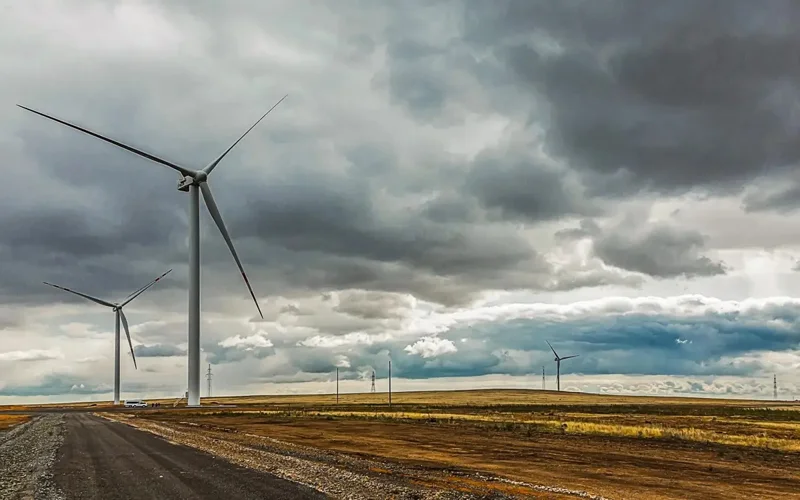RES in Kazakhstan: What new projects will be launched by 2027 – qazinform.com

Renewable Energy Development in Kazakhstan: Progress and Alignment with Sustainable Development Goals
Current Status of Renewable Energy Facilities
As of late 2024, Kazakhstan has made significant strides in expanding its renewable energy sector. According to Vice Minister Sungat Yessimkhanov, the country hosts 156 renewable energy sources (RES) facilities with a combined capacity of 3,122 MW. This capacity accounts for 6.43% of the total electricity supply in Kazakhstan, reflecting the nation’s commitment to Sustainable Development Goal (SDG) 7: Affordable and Clean Energy.
Electricity Generation by Renewable Sources in 2024
In 2024, RES facilities generated a total of 7.581 billion kWh of electricity. The breakdown by energy source is as follows:
- 4.513 billion kWh from wind power facilities
- 1.8896 billion kWh from solar power facilities
- 1.177 billion kWh from hydropower facilities
- 1.58 billion kWh from bio-energy facilities
This diversified energy mix supports SDG 13: Climate Action by reducing reliance on fossil fuels and lowering greenhouse gas emissions.
Ongoing Renewable Energy Projects
Currently, 91 renewable energy projects with a total capacity of 2,258 MW are under implementation, contributing further to Kazakhstan’s sustainable energy goals. These projects include:
- 20 wind power stations with a capacity of 1,364.5 MW
- 9 solar power stations with a capacity of 282.6 MW
- 58 small hydropower stations with a capacity of 591.81 MW
- 4 bioenergy facilities with a capacity of 19.25 MW
These initiatives align with SDG 9: Industry, Innovation, and Infrastructure, fostering sustainable industrial development and infrastructure expansion.
International Collaboration and Investment
The introduction of renewable energy auctions has attracted participation from over 260 companies across 14 countries, including China, Germany, Turkey, France, UAE, and South Korea. This international involvement underscores Kazakhstan’s role as an open and transparent platform for green energy investment, supporting SDG 17: Partnerships for the Goals.
Conclusion
Kazakhstan’s ongoing efforts in expanding renewable energy capacity and fostering international cooperation demonstrate a strong commitment to achieving multiple Sustainable Development Goals. The country’s progress in renewable energy not only enhances energy security and economic growth but also contributes significantly to global climate action and sustainable development.

1. Which SDGs are addressed or connected to the issues highlighted in the article?
- SDG 7: Affordable and Clean Energy – The article focuses on renewable energy sources (RES) development in Kazakhstan, highlighting the increase in renewable energy capacity and generation.
- SDG 13: Climate Action – By promoting renewable energy, the article relates to efforts to combat climate change through reducing greenhouse gas emissions.
- SDG 9: Industry, Innovation and Infrastructure – The development and implementation of renewable energy projects involve innovation and infrastructure expansion.
- SDG 17: Partnerships for the Goals – The article mentions international cooperation with companies from 14 countries, indicating global partnerships for sustainable development.
2. What specific targets under those SDGs can be identified based on the article’s content?
- SDG 7 Targets:
- Target 7.2: Increase substantially the share of renewable energy in the global energy mix.
- Target 7.a: Enhance international cooperation to facilitate access to clean energy research and technology.
- SDG 13 Target:
- Target 13.2: Integrate climate change measures into national policies, strategies, and planning.
- SDG 9 Target:
- Target 9.4: Upgrade infrastructure and retrofit industries to make them sustainable, with increased resource-use efficiency.
- SDG 17 Target:
- Target 17.16: Enhance the global partnership for sustainable development.
3. Are there any indicators mentioned or implied in the article that can be used to measure progress towards the identified targets?
- Indicators related to SDG 7:
- Proportion of energy generated from renewable sources (e.g., 6.43% of total electricity from RES in Kazakhstan).
- Total installed capacity of renewable energy facilities (e.g., 3,122 MW as of 2024).
- Annual generation of electricity from renewable sources (e.g., 7.581 billion kWh in 2024).
- Indicators related to SDG 13:
- Implementation of renewable energy projects contributing to emission reductions (implied through increased RES capacity and generation).
- Indicators related to SDG 9:
- Number and capacity of renewable energy infrastructure projects under implementation (e.g., 91 projects with 2,258 MW capacity).
- Indicators related to SDG 17:
- Number of countries and companies involved in renewable energy development (e.g., 260 companies from 14 countries).
4. Table: SDGs, Targets and Indicators
| SDGs | Targets | Indicators |
|---|---|---|
| SDG 7: Affordable and Clean Energy |
|
|
| SDG 13: Climate Action |
|
|
| SDG 9: Industry, Innovation and Infrastructure |
|
|
| SDG 17: Partnerships for the Goals |
|
|
Source: qazinform.com








